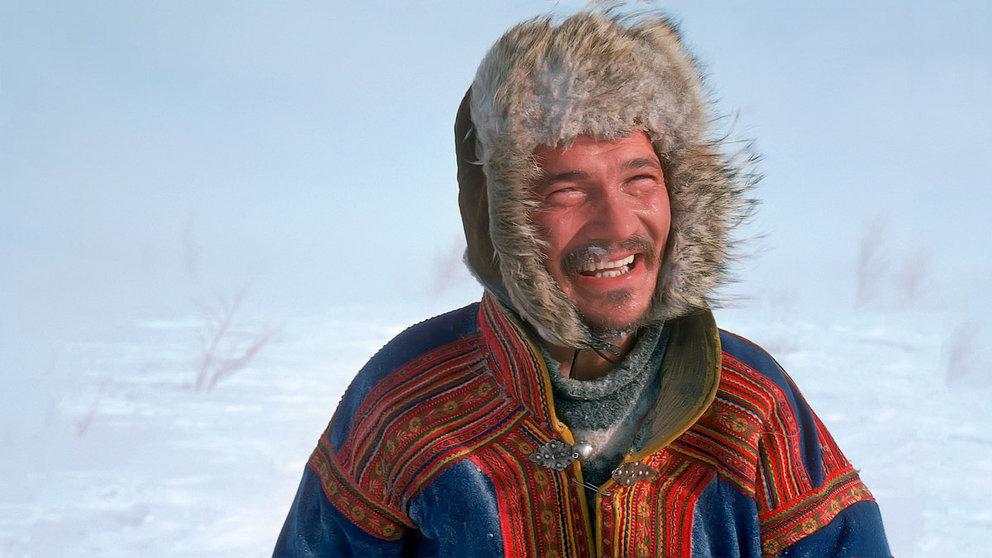February 6 is the Sámi National Day. The date was chosen to commemorate the first Sámi congress, which was held in Trondheim (Norway) in 1917.
The Sámi people (sometimes spelled Sami or Saami) are a Finno-Ugrian group originally from the northern parts of Finland, Norway, Sweden and parts of North-Eastern Russia. Nowadays, the biggest group of Sámi people (about half of them) are living in Norway.
The total Sámi population is estimated to be over 75,000, and there are about 10,000 Sámi in Finland, more than 60 per cent of them living outside the Sámi Homeland.
According to the book 'Finland, a cultural encyclopedia', published by the Finnish Literature Society, the Sámi have lived in their current location for at least 2,000 years, since the beginning of what is known as the Sámi Iron Age, probably longer.

A Sámi family, at the beginning of 20th century, in Norway. Photo: Pixabay.
In the current area of habitation, there is no evidence of significant population movement in the older Metal or Stone Ages, so that the Sámi are, by blood legacy, at least partially the descendants of the oldest culture in the area, Komsa (c. 10,000-4000 B.C).
Sámi language
The linguistic forms, however, nevertheless originate from the same stock as the eastern Baltic languages, the Finnish-Sámi parent language or early proto Finnish. This is believed to have divided into late proto Finnish and proto Sámi at the time of the coming of the battle-axe culture and early Metal Age (c. 2500-1500 B.C.).
At that time, the population of southern and south-western Finland was subjected to strong Baltic and Germanic influence and became Finns practising cattle-rearing and agriculture. Groups living farther north in the interior, which preserved their traditional way of life and culture based on hunting, and also their language with smaller changes, were the beginnings of Sámi population.
 Reindeer herding is still practiced by Sámi people in Lapland. Photo: Arto Liiti/Visit Finland
Reindeer herding is still practiced by Sámi people in Lapland. Photo: Arto Liiti/Visit Finland
Political representation
People are counted as Sámi by their own confession, usually on the basis of language or birth. These criteria are also important in the official definitions adopted by Finland, Sweden and Norway, which have become necessary with the institution of representative organs and government.
Among them is the Finnish Sámi Parliament (Sámediggi), of particular importance in the Sámi homelands, among which are the three northernmost municipalities of the country: Enontekiö, Inari and Utsjoki, and the Lapp reindeer grazing association in the municipality of Sodankylä.
Economy
The Sámi still are active in primary economy to a fairly large extent, particularly in reindeer-herding, which apparently developed into an extended, nomadic form in the medieval period. it is only in the second half of the 20th century that livelihoods have begun to be obtained more extensively from the secondary and tertiary sectors, particularly the service industries.
Today at most 10 per cent of the Sámi people are engaged in reindeer-herding, but in the cultural tradition this dominant way of life of the historical period remains strong.
Discrimination and abuse
"Sámi people have had a weak status in Finland in many ways. The government has not respected Sámi land rights, and Sámi people were forced to integrate into Finnish culture all the way up to the 1970s. Finland has been scorned by international groups concerning its treatment of the Sámi, even in recent years,". This wasn't said by a Sámi, but recently by Interior Minister Maria Ohisalo.
Finland has received a remarkable amount of recommendations from the United Nations human rights mechanisms and regional human rights institutions to resolve the land right issues and to strengthen the Sámi People’s right to self-determination, but these questions still remain unsolved.
Although Finland has recognised the Sámi as an indigenous people with specific rights, the situation in Finland, particularly as regards land rights, is problematic and decisions made on land use are made without free, prior and informed consent.
According to the book 'Arctic Triumph: Northern Innovation and Persistence', published by Springer (Editors: Sellheim, Nikolas, Zaika, Yuliya V., Kelman, Ilan), there is also a problem in the 2016 Act on Metsähallitus, the Finnish forest management agency, does not require consultation with the Sámi before issuing land use permits. Also as regards the issuing of fishing permits, Sámi land users or the Sámi Parliament are not consulted.
 Sami woman, doing crafts in Lapland. Photo: Riku Pihlanto/Visit Finland.
Sami woman, doing crafts in Lapland. Photo: Riku Pihlanto/Visit Finland.
The second major concern regarding the Sámi in Finland affects the Sámi languages. Due to the limited speakers of different Sámi languages, access to health services in Sámi is limited also in the Sámi homeland. Although language revitalisation programmes have been initiated, the sustainable teaching of children in the regional Sámi language cannot be guaranteed.
Truth and Reconciliation Commission
After years of negotiations, the Sámi Parliament (Sámediggi) and the Finnish government agreed to establish a commission to investigate the Finnish government's responsibility in committing historical crimes, and to find a way to reconcile those dramatic mistakes by dealing with the facts of the past.
Sámi Parliament chair Tiina Sanila-Aikio said: "It's hard to know in advance how long the proper hearings and interviews will last. The commission must gather all relevant information and listen to Sámi people's experiences. We also need to scrutinize the part that the government and the authorities have played in Sámi history. It will be a couple of years at least until we have a final report."












